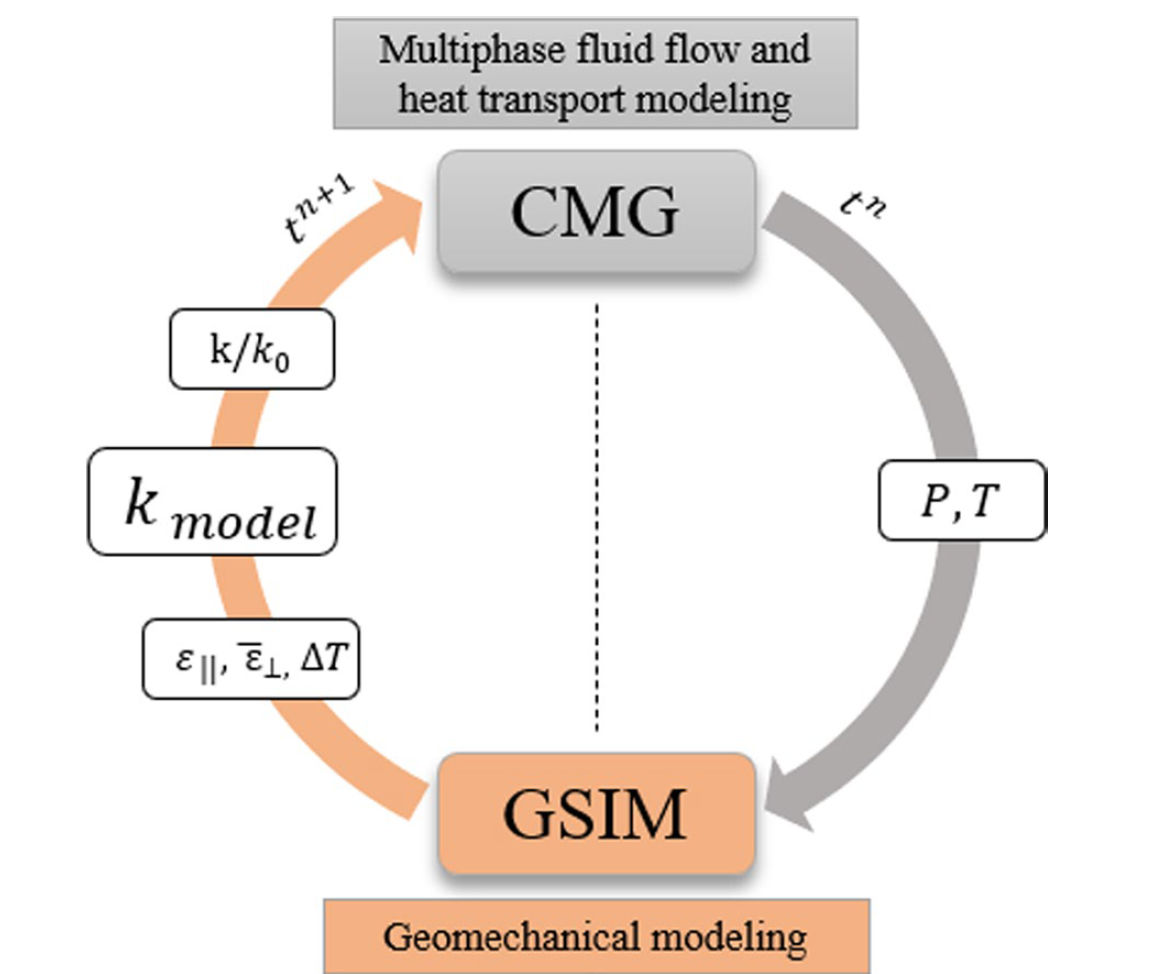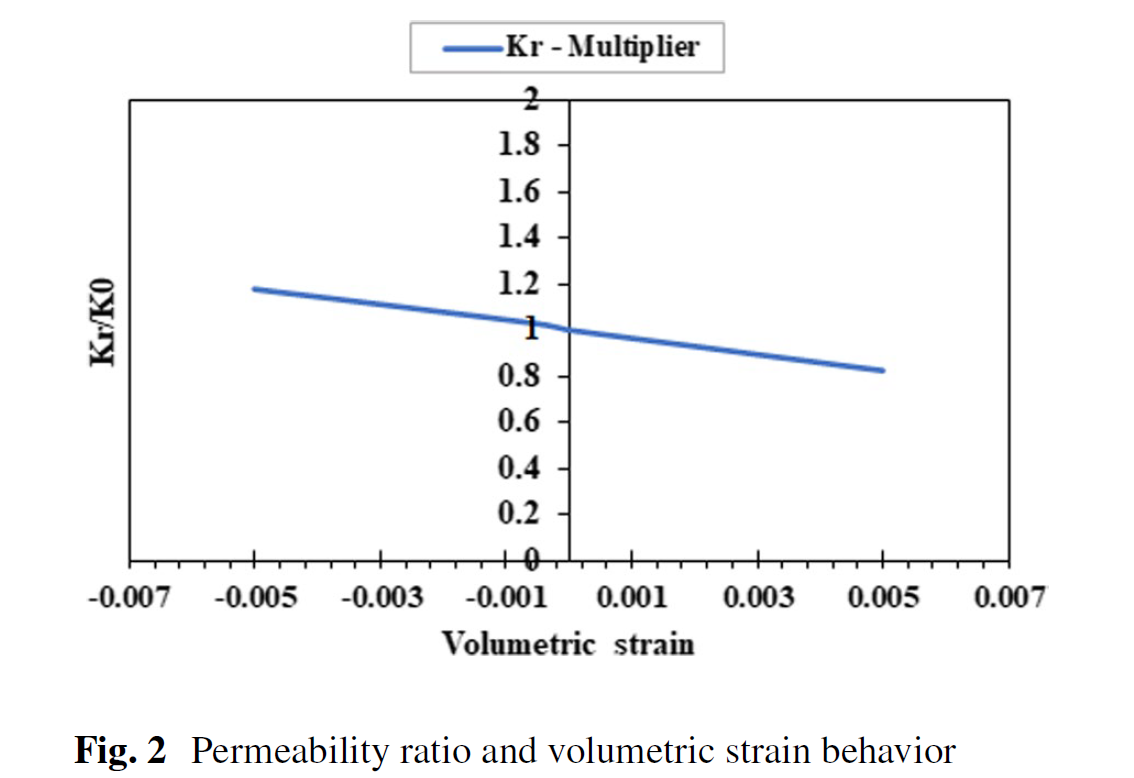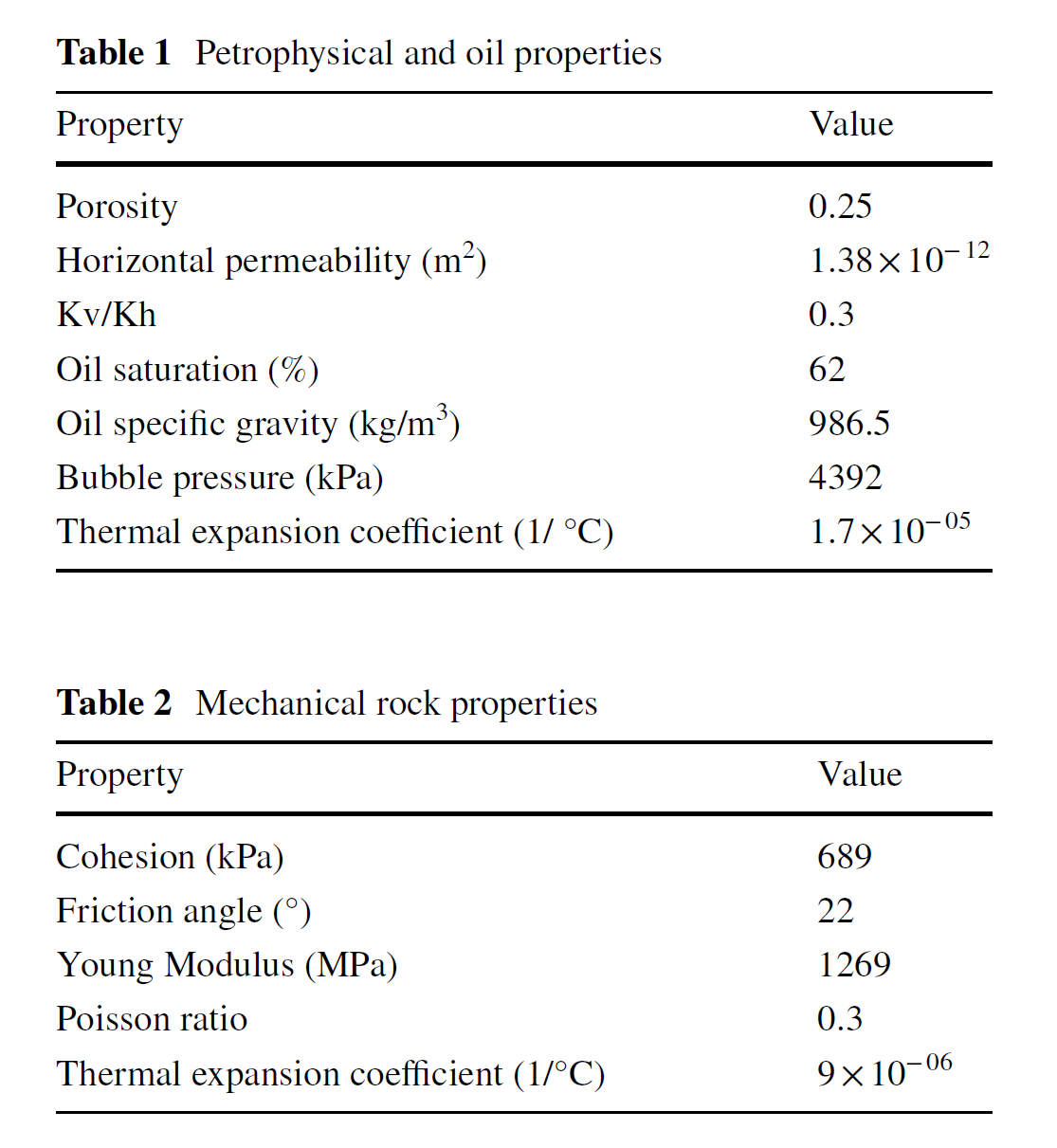Impact assessment of strain-dependent permeability on reservoir productivity in CSS
Geomechanical analysis is essential to assess the productivity forecast of cyclic steam simulation (CSS) operations in heavy oil reservoirs. The high-temperature and high-pressure fluid injection, as well as depletion in unconsolidated and poorly cemented porous media during CSS, may generate a relevant stress–strain response at levels that can lead to irreversible changes in reservoir permeability. Therefore, it is fundamental to consider permeability dependence on rock strain to properly analyze the impact of geomechanics, pressure, and temperature on reservoir performance.
This paper implements a proposed directional strain-dependent permeability model to assess the productivity and compare it with a conventional volumetric permeability model through numerical simulation, considering the effects of wellbore creation on the stress–strain initial state. An explicit coupling between CMG-STARS and the geomechanics in-house simulator GSIM is carried out to perform the simulations using the proposed model. The results of oil production rates and permeability profiles show competitiveness between dilation and compaction periods that modify the structure of the porous media. There is a significant influence of stress state, strain, and injected energy on the permeability parameter. The approximations of this study might be used for feasibility assessment and optimization of CSS when integrating reservoir flow and geomechanical behavior analysis in productivity forecast.
地质力学分析对于评价稠油油藏蒸汽吞吐(CSS)作业的产能预测至关重要。CSS期间,高温和高压流体注入,以及疏松和胶结不良多孔介质中的损耗,可能会产生相关的应力-应变响应,其水平可能导致储层渗透率的不可逆变化。因此,考虑渗透率对岩石应变的依赖性,正确分析地质力学、压力和温度对储层性能的影响是至关重要的。考虑到井筒形成对应力-应变初始状态的影响,本文采用了所提出的方向应变相关渗透率模型来评估产能,并通过数值模拟将其与传统的体积渗透率模型进行了比较。CMG-STARS和地质力学内部模拟器GSIM之间进行了显式耦合,以使用所提出的模型进行模拟。采油速率和渗透率剖面的结果表明,膨胀期和压实期之间的竞争性改变了多孔介质的结构。应力状态、应变和注入能量对渗透率参数有显著影响。当将储层流动和地质力学行为分析集成到产能预测中时,本研究的近似值可用于CSS的可行性评估和优化。




